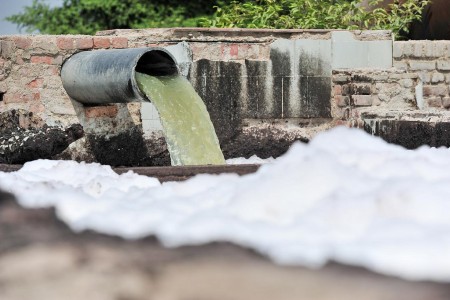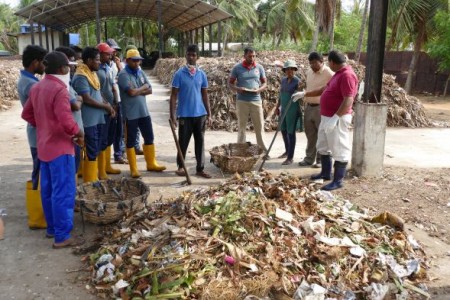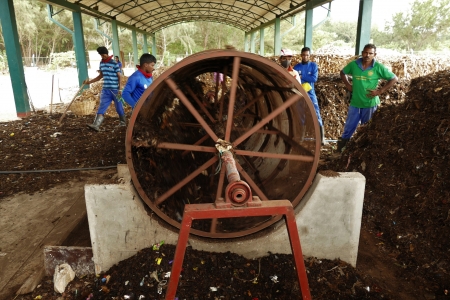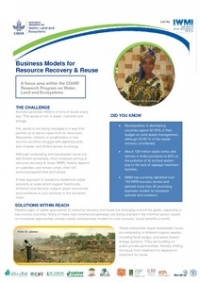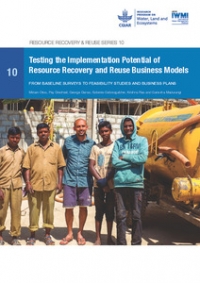Humans generate heaps of waste every day. Waste rich in energy, nutrients, or water. Most of it gets flushed down the drain, dumped in landfill sites, burned or even abandoned in public spaces or nature. Meanwhile, millions of farmers struggle with depleted soils and lack of water. A new 800-page book profiles multiple ways to harness this waste to help fill the world’s food and energy needs.
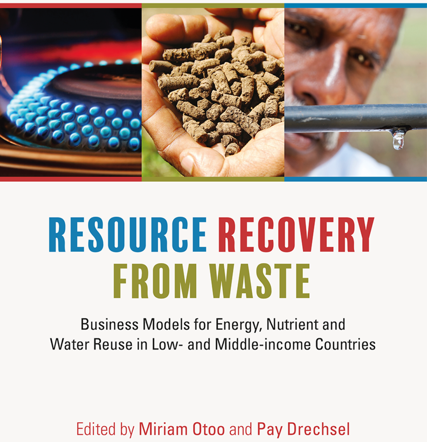
Resource Recovery from Waste draws from joint research of the International Water Management Institute (IWMI / WLE), EAWAG, CEWAS, WHO and others to examine how Resource Recovery and Reuse (RRR) can create business opportunities for livelihoods, enhance food security, reduce waste, improve water supply and recover or save sanitation costs – to spawn a whole circular economy of waste-based products and services.
As a resource for entrepreneurs, academics – and most of all business, engineering and environmental students – the book profiles 24 innovative business models based on 47 real-world case studies. Models range from using food waste as a fuel source, to large-scale composting, to systems that swap water between urban and agricultural areas. Several showcase turning our own toilet waste into real-life business ideas – as fuel briquettes, fish feed or fertilizer. These innovations range from Corporate Social Responsibility actions to profit-based models.
Most RRR projects continue to depend largely on subsidies. However, in many low-and middle-income countries entrepreneurial initiatives or public-private partnerships are using RRR to cut costs, recover costs or generate revenue. They shift the focus from “treatment for waste disposal” to “treatment for safe reuse” and offer society multiple benefits.
“This will help sensitize the next generation of decision makers to the opportunities inherent in the Circular Economy," states Guy Hutton, Senior Advisor at UNICEF, and previously a Senior Economist at the World Bank. "The catalogue fills a significant gap in the literature and should prove useful not only for today’s investors and policy makers but also for the curricula of engineering, economics, environmental and business schools.”
The business models are scalable and ready to be tested in different regions. The accompanying case studies will help students, lecturers and researchers to understand opportunities and constraints. They are also supported by a review of the enabling regulatory and financial environments for RRR in low- and middle-income countries.
The production of the book has been supported by the Swiss Agency for Development and Cooperation (SDC), the International Fund for Agricultural Development (IFAD) and the CGIAR Research Program on Water, Land and Ecosystems (WLE). The International Water Management Institute (IWMI), and WLE are non-profit research-for-development organizations seeking sustainable agriculture solutions.
About the Editors:
The editors are seeking university departments to integrate the book into their teaching and are available to help in the setup of modules or curricula. The book complements their fecal sludge business models available here.
- Miriam Otoo is a Research Economist, leading the Research Group on Resource Recovery and Reuse at the International Water Management Institute (IWMI)
- Pay Drechsel is a Principal Researcher at the International Water Management Institute (IWMI), leading the Rural-Urban Linkages programs for IWMI and for the CGIAR Research Program on Water, Land and Ecosystems (WLE).
For more information or to arrange an interview, contact: Adam Hunt, WLE/IWMI: a.hunt@cgiar.org
Find your copy or write a review on Amazon or Routledge
Download a free PDF copy here
Request a review copy here

